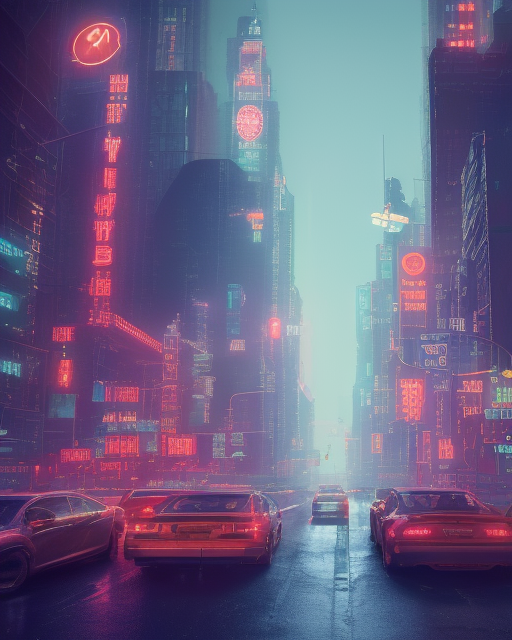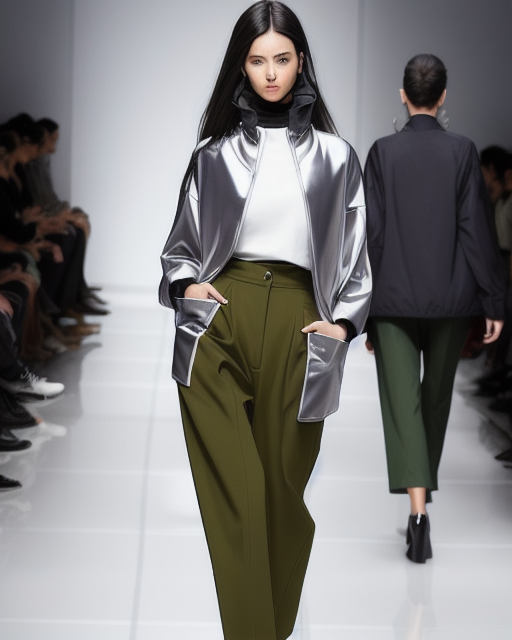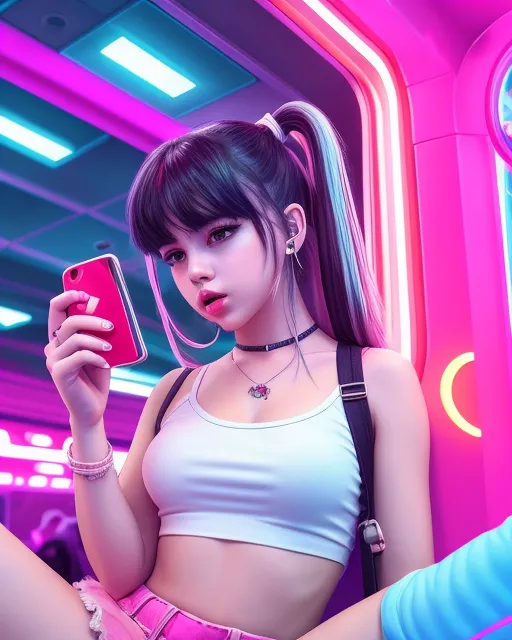Modern applications of AI
Artificial Intelligence (AI) is gaining momentum in today’s world at an unprecedented pace. With the advancement of machine learning, deep learning, and natural language processing, AI has become more sophisticated and versatile than ever before. One of the most remarkable applications of AI is in generating images and text. With algorithms capable of learning from vast amounts of data, AI can generate images that are virtually indistinguishable from those created by humans. It has already shown significant progress in areas such as medical imaging, artistic design, and fashion. AI is also proving to be a valuable tool for generating text, from simple news articles to complex research papers. This trend is expected to continue, and AI-generated content is likely to become an increasingly integral part of our daily lives.
The ability of AI to generate both images and text has opened up new frontiers in many industries. For example, in the field of architecture, AI can generate designs and models that are not only aesthetically pleasing but also optimized for functionality and sustainability. AI-generated architectural designs can take into account various factors such as building codes, environmental impact, and cost-effectiveness, leading to better and more efficient buildings. In the world of publishing, AI-generated text can help automate the process of content creation, enabling publishers to produce more articles, books, and other written works in less time. This can result in significant cost savings and increase the volume of available content. Let us tell you more about the areas where AI has the most potential.
Create Covers with AI
The use of AI has made designing covers much easier and more efficient. With AI algorithms capable of analyzing vast amounts of data, they can generate cover designs that are not only visually striking but also optimized for specific markets and audiences. This makes the process of creating covers faster and more cost-effective, allowing designers to focus on other aspects of their work.
One of the most significant benefits of using AI to create covers is the ability to experiment with different designs and variations quickly. AI can generate hundreds or even thousands of cover designs in a matter of minutes, allowing designers to choose the most effective and visually appealing option for a particular product or market. This not only saves time but also reduces the risk of creating ineffective or unappealing covers, which can negatively impact sales.
Types of Covers
The field of cover design is incredibly broad, encompassing a wide range of media and industries. For books, covers serve as the first point of contact between readers and the content within. A book’s cover should be designed to catch the reader’s eye and communicate the essence of the story, setting the tone for the entire reading experience. With AI-generated covers, designers can experiment with different designs and variations, ensuring that the cover effectively conveys the book’s message and resonates with its target audience.
Movie covers are another area where AI-generated designs can make a significant impact. With countless movies being released each year, it is essential to have a cover that stands out and effectively communicates the film’s genre and storyline. With AI’s help, designers can quickly create tons of covers that appeal to different audiences, such as action movie fans, romance enthusiasts, or horror aficionados. This approach ensures that the cover resonates with its target audience, leading to increased sales and audience engagement.
Music album covers are also an essential aspect of the music industry, serving as a visual representation of the artist and their music. A well-designed album cover can capture the soul of the music within, creating an emotional connection with listeners. With AI-generated designs, designers can create album covers that are visually striking and relevant to the music and band or a singer’s concept. This can lead to increased album sales and more engaged listeners.
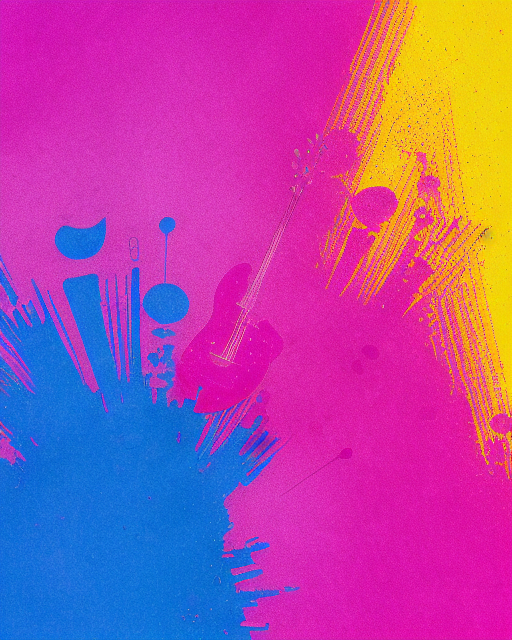
Example of AI-generated album cover for a pop-rock band with chaotic energy
In the world of comic books, covers serve as the primary means of attracting readers’ attention and enticing them to purchase a particular issue. The cover must capture the main theme of the story, convey the tone and mood of the comic, and showcase the characters and events within. AI-generated cover designs can provide comic book publishers with a cost-effective way to create visually compelling covers that ring a bell for their target audience. Designers can experiment with different styles, color schemes, and layout via AI, allowing them to create unique and likable covers that stand out on the crowded shelves of comic book stores.
In the world of art books, covers serve to advertise the artwork contained within the book. Art book covers must be visually striking, aesthetically pleasing, and accurately represent the style and content of the book. AI-generated cover designs can help art book publishers create covers that capture the spirit of the artwork inside. With AI algorithms capable of analyzing huge amounts of data on art styles, color schemes, and composition, designers can create covers that are not only beautiful but also reflective of the book’s content. This can help art book publishers stand out in a highly competitive market and increase the likelihood of sales.
Podcasts are another area where cover design is becoming increasingly important. With thousands of podcasts being released each day, it is crucial to have a cover that attracts attention and effectively communicates the podcast’s genre and theme. AI-generated designs can help designers create podcast covers that are alluring and relevant to the content within, making it easier for listeners to discover and engage with new podcasts.
Finally, cover design is also essential in the world of stationery, where notebooks, journals, and planners require good-looking covers that reflect the user’s personality and style. With AI’s help, designers can create stationery covers that are personalized and unique, appealing to a wide range of customers and enhancing the overall user experience.
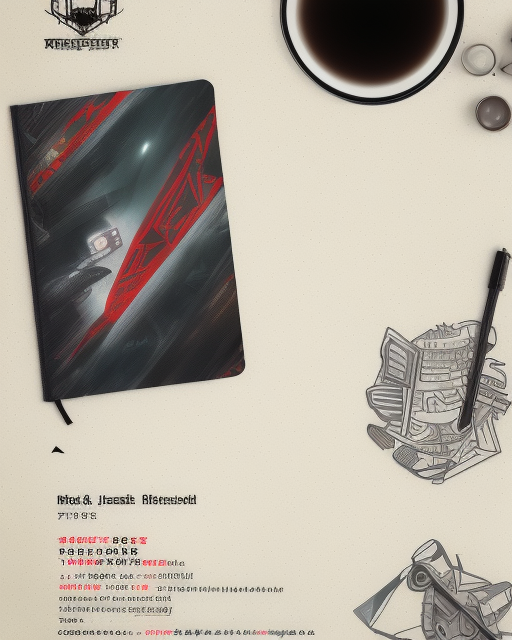
An anime-themed notebook and scrapbook cover concept created by AI
Define What Influences Your Cover
The process of creating a cover design is complex and multifaceted, involving a range of factors and influences. At its core, a cover design is meant to communicate the essence of the product it represents, whether that be a book, comic, or other form of media. This means that the design should reflect the many nuances conceived by the authors of what the cover is for.
One of the most significant influences on cover design is the target audience. Designers must have a deep understanding of the demographic they are trying to reach, including their interests, preferences, and expectations. For example, a cover design for a romance novel will likely be very different from one for a horror novel, as the two genres have vastly different audience expectations.

AI version of a classic romance novel
Another factor that influences cover design is the product’s competition. In a crammed market, a cover must stand out and catch the eye of potential buyers. This means that designers must be aware of current trends and styles in their respective industries, as well as the specific design elements that are proven to be effective.
The creative process itself also plays a significant role in cover design. Designers must balance the need for visual impact with the desire for a design that is meaningful and reflective of the product it represents. This means that they must consider elements such as color, typography, and composition, as well as the overall layout and presentation of the design.
Make Several Design Options
When it comes to creating covers, experimenting with different designs is crucial to finding the perfect fit. That’s why the IMG Converter is a valuable tool for cover designers. With no limit on the number of images you can create, users can experiment with different designs to find the most effective one for their product. This allows designers to fine-tune every aspect of their cover, from the color scheme to the typography, to create a design that perfectly captures the essence of their product.
IMG Converter’s ability to generate images from text is especially useful for cover design. Designers can enter a title or description of their product and generate multiple images that are optimized for their specific needs. This means that designers can quickly generate a range of options to choose from and experiment with, allowing them to create an intriguing and beautiful cover in less time than it would take to create each image manually. This is particularly valuable for designers who need to create multiple covers for a series or who have tight deadlines.

The cover of an old-school comic book about the adventures of aliens in AI representation
IMG Converter’s ability to generate images from both text and images is also a valuable tool for cover designers. Designers can upload images and input text to generate a range of images that are optimized for each prompt. This allows designers to create a cover that perfectly captures the heart and soul of their product and reflects the genre, tone, and content of their work. By combining images and text, AI can offer the kind of cover that didn’t occur to the designers themselves, and pleasantly surprise them.
Overall, IMG Converter is an invaluable tool for cover designers, allowing them to experiment with different designs and generate images from both text and images. Its powerful tools and flexibility make it an essential tool for anyone involved in cover design, and its no limit policy ensures that designers can create as many images as they need to find the perfect fit for their product.
Create Realistic Architectural Renderings
In today’s world, clients and architects are increasingly turning to AI to help bring their visions for construction projects to life. With AI technology reaching new levels of sophistication and accuracy, it has become possible to use AI-generated designs as the basis for construction projects. This allows architects to experiment with different design options, make changes and adjustments quickly, and ultimately create a project that accurately reflects the client’s vision.
Moreover, AI-generated designs are not just useful for planning and experimentation, but can also be used for the design of the final result. With algorithms capable of learning from vast amounts of data, AI-generated designs can be optimized for specific purposes, whether that be energy efficiency, sustainability, or aesthetics. This means that architects can use AI-generated designs to create buildings that are not only beautiful but also functional and efficient.
The use of AI in architecture is transforming the way we think about design and construction. With AI-generated designs becoming increasingly common, architects have more tools than ever before to take into account and fulfill as many customer desires as possible.
Possibilities of AI Architecture
The IMG Converter AI is capable of reflecting a wide range of architectural styles, from classical to modern, from gothic to high-tech and beyond. Be sure that AI is capable of creating designs that accurately reflect the style and aesthetic of a particular architectural genre. This means that architects and designers can use the IMG Converter to experiment with different styles, color schemes, and design elements, allowing them to create designs that will definitely appeal to their taste.
One of the most significant advantages of using the IMG Converter AI is the ability to design a building from multiple angles, both inside and out. With the AI capable of generating 3D models, architects can view and experiment with designs from every possible angle, giving them a more comprehensive understanding of the project and allowing them to make changes and adjustments as necessary.

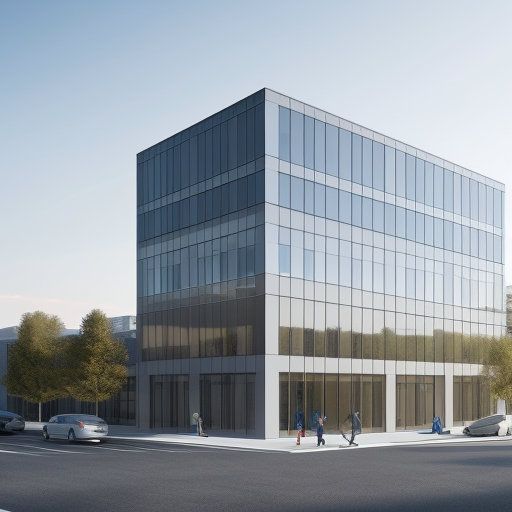
Architectural rendering of a blue-grey office building with lots of windows
Another advantage of the IMG Converter AI is the ability to reflect specific details desired by clients or architects. Whether it be a particular material or design element, the AI can be programmed to generate designs that incorporate these specific details, giving clients and architects greater control over the final result.
Moreover, the AI can even generate a draft or drawing if given the appropriate prompt. This means that architects and designers can use the AI to quickly generate a range of design options, allowing them to experiment with different ideas and concepts before settling on something and making final adjustments.
However, it’s important to note that the calculations and research must still be done by experts, and the AI’s main function is to mark a starting point and generate an idea and a concept. While the AI can provide valuable insights and options, it is ultimately up to the architects and designers to use their expertise to create a building that is functional, visually appealing and — most important! — safe. IMG Converter AI is a valuable tool for architects and designers, providing them with a starting point for their design process.
Area of Usage
The IMG Converter is not just a valuable tool for architects and designers in the real world — it can also be used by game designers and CGI specialists to create authentic and immersive virtual environments. With the ability to generate both 2D and 3D designs, the IMG Converter can be used to create everything from small locations like rooms and buildings to entire cities and open world maps.
For game designers, the IMG Converter offers a powerful tool for creating detailed and realistic game environments. Whether it be designing individual rooms or entire levels, the AI-generated designs can be optimized for specific purposes, including functionality, aesthetics, and gameplay. This means that game designers can create environments that are not only stunning but also highly immersive and interactive, enhancing the overall gaming experience.
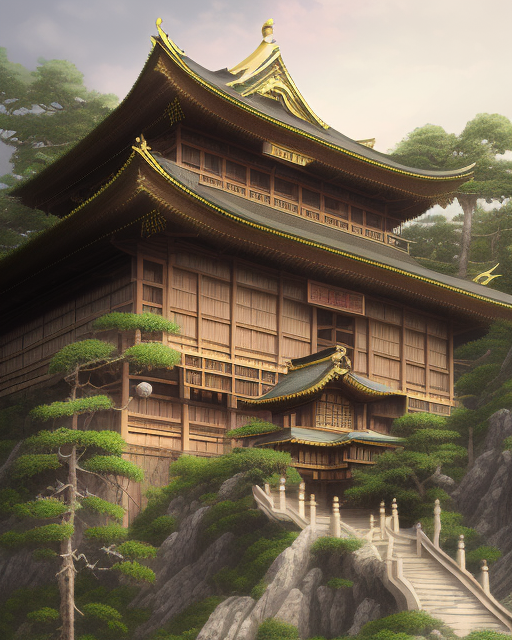
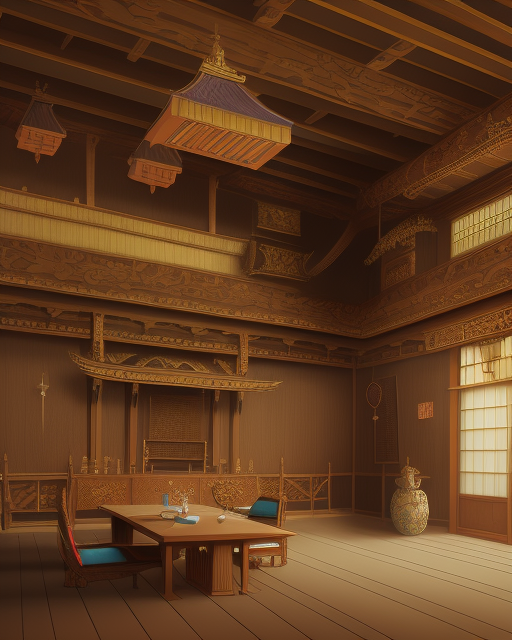
The exterior and interior decoration of a classic Japanese mansion by our AI
CGI specialists can also benefit from the IMG Converter’s ability to generate lifelike and comprehensive virtual environments. Whether it be for movies, television, or virtual reality experiences, the AI-generated designs can be used to create environments that accurately reflect the desired aesthetic and setting. From small locations like rooms and buildings to larger environments like cities and landscapes, the IMG Converter can generate a range of designs that can be used to create immersive and captivating CGI environments.
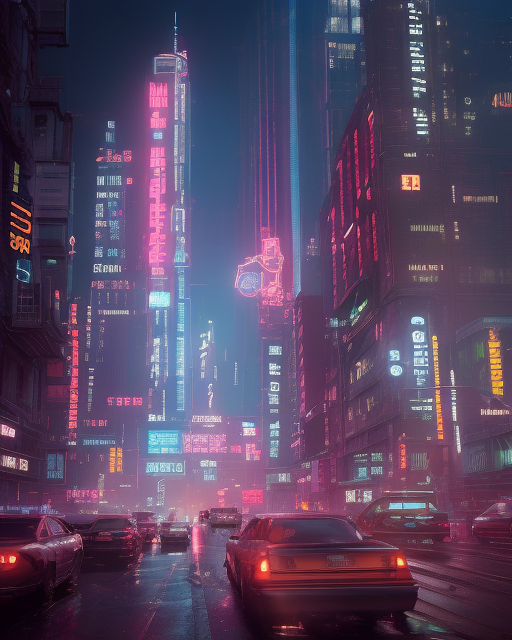
New York 3170 concept art with lots of skyscrapers, neon signs and futuristic cars
Finalize and Introduce Your Design
Using the IMG Converter, users can create detailed and realistic architectural designs that are ready for final editing. Whether it be for real-world construction projects or virtual environments, the AI-generated designs can be used as a starting point to create unique and visually stunning designs. And for users who need to make further adjustments or edits, IMG Converter has its own PSD Editor.
PSD Editor is a powerful tool for editing the resulting images. It allows users to modify and fine-tune the designs to meet their specific needs, whether that be adjusting the color scheme, adding or removing elements, or making other changes. Also, PSD Editor allows users to combine elements from different resulting images, giving them even greater control over the final design. With the PSD Editor, users can create designs that are truly unique and reflective of their vision and needs.
That’s it, your realistic architectural rendering is ready! Whether you’re using it for a real-world construction project or a virtual environment, the IMG Converter has provided you with a starting point to create a design that is visually stunning and highly functional. And with the PSD Editor, you have the tools you need to make further adjustments and fine-tune the design to meet your specific needs. So enjoy your design and good luck with your project!
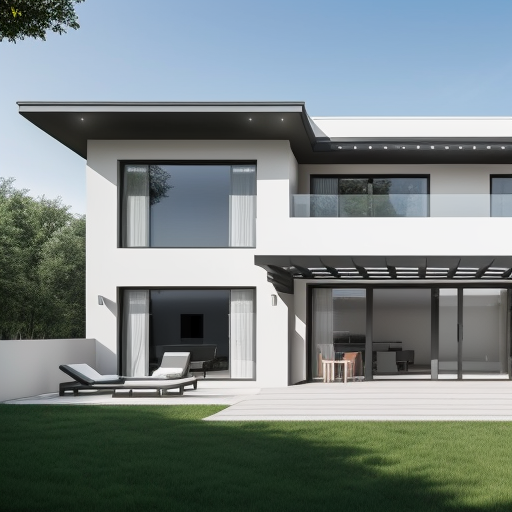
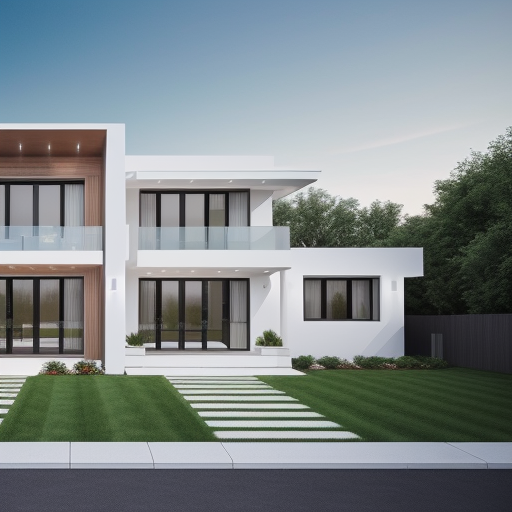
Two hi-tech country house designs created by AI
Why Use AI To Make Covers and Architectural Renderings
There are many reasons why users should use AI, specifically the IMG Converter AI, to generate covers and architectural renderings. Here are seven of the most compelling reasons:
- Cost-effectiveness: Using AI to generate designs is often much cheaper than hiring a human designer or architect, making it an affordable option for those on a tight budget.
- Speed: The IMG Converter AI can generate designs quickly, allowing users to experiment with different options and ideas in a fraction of the time it would take to create each design manually.
- Creativity: The IMG Converter AI can generate designs that are unique and creative, providing users with new and innovative design options that they may not have considered otherwise.
- Accuracy: With algorithms capable of analyzing vast amounts of data, the IMG Converter AI can generate designs that are highly accurate and reflective of the desired style or aesthetic.
- Flexibility: The IMG Converter AI can generate designs for a wide range of applications, from covers and architectural renderings to virtual environments and game design.
- Customizability: The PSD Editor allows users to further customize and fine-tune the generated designs to meet their specific needs, providing greater control over the final result.
- Accessibility: The IMG Converter AI is accessible to anyone with an internet connection, making it a valuable tool for designers and architects around the world.
Overall, the IMG Converter AI offers many compelling reasons to use AI for cover design and architectural rendering. Whether it be cost-effectiveness, speed, creativity, or accuracy, the IMG Converter AI provides a valuable tool for designers and architects looking to create unique and visually stunning designs.
Guides
Now that we’ve explored the many ways that AI tools like the IMG Converter can be used for cover design and architectural rendering, it’s time to dive into the specifics of using these tools. In this section, we’ll provide guides to the various tools and technologies mentioned in the article, including PSD Editor, and more. Whether you’re new to AI tools or an experienced user, these guides will provide you with the knowledge and expertise you need to create stunning and functional designs for your projects. So let’s get started and explore the exciting world of AI design tools!
AI Art Generator from Text Guide
- Find and click the “AI Art Generator” and then “Generator from Text” buttons on the homepage.
- Type the text that you want to turn into an image in the text box provided.
- Choose the settings options that are to your liking such as size and tiling.
- Press the “Generate” button.
- Once you are happy with the generated image, save it to your device.
AI Art Generator from Image Guide
- Find and click the “AI Art Generator” and then “Generator from Image” buttons on the homepage.
- Enter the text that you want to turn into an image in the text box provided.
- Click the “Add File” button and select the image you want to use.
- Select “Interrogate Clip” to see changeable description of the uploaded picture from AI or “Interrogate Deepbooru” to see image keywords.
- Change anything you’d like in text and settings.
- Press the “Generate” button.
- Once you are happy with the generated image, save it to your device.
PSD Editor Guide
- Turn your computer on and go online
- Open a browser and visit img-converter.com
- Go to the corner in the top left and choose “File”
- You may then start a new project, drag or upload an image from your PC or, type in an image URL
- You can now edit the image
- Take advantage of the tools on the top and to the left. Their layout is similar to that of Photoshop
- Once you’re finished, you can save the file as PSD if you go to “File – Save As PSD.” It’s also possible to export it as PFD, GIF, JPEG, SVG, and more
- It’s familiar if you’ve worked in a similar environment before and easy to pick up too
In conclusion, AI technology is transforming the fields of cover design and architectural rendering, offering designers and architects a powerful set of tools for creating unique and functional designs. With the IMG Converter, designers and architects can experiment with different styles and ideas, generate realistic and detailed designs, and customize and fine-tune their work to meet their specific needs. As AI technology continues to evolve and improve, we can only expect to see even more exciting developments in the field of design and architecture. Ultimately, the use of AI in these commercial areas offers immense potential for creating beautiful, functional, and innovative designs that meet the needs and desires of all kinds of people.
